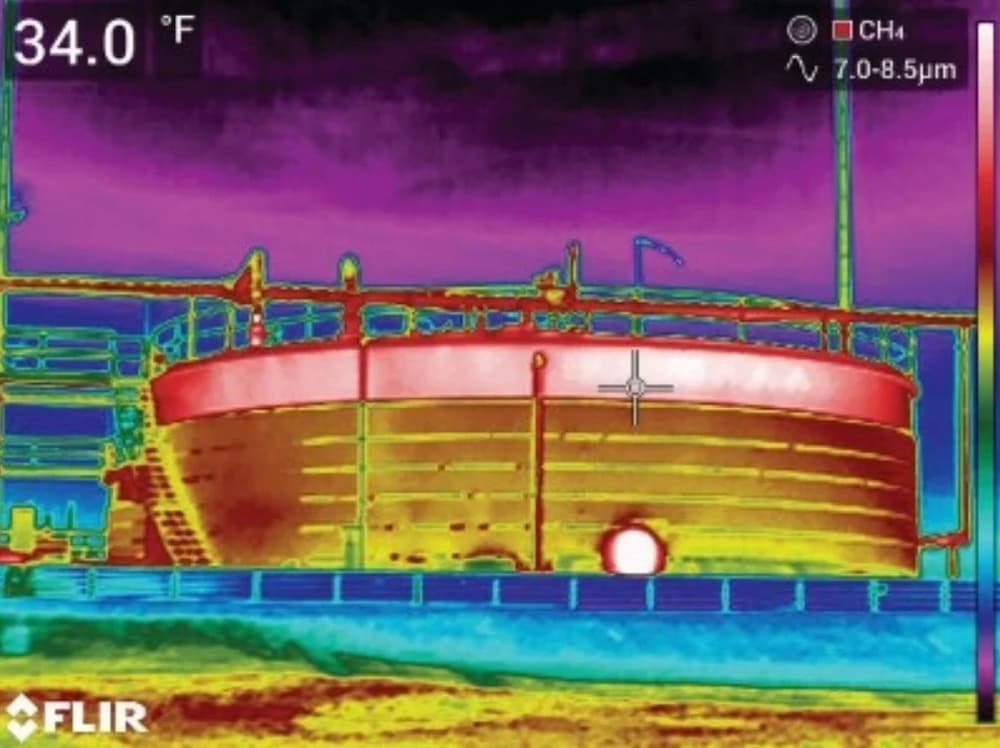While the essential functions of Teledyne FLIR thermal imaging cameras are relatively easy to understand, performing a professional infrared inspection is much more than simply using a thermal camera. With proper training you can truly make the most of your camera; our Thermascan Level 1 or 2 ITC training courses will provide you with the confidence you need to capture high-quality images to industry standards. So, check out the benefits of undertaking ITC thermal imaging training and how we can help.
Who Needs Thermography Training?
First of all, let's take a look at who can benefit from thermal imaging training. If you're interested in using thermographic equipment for a one-off application, then you may not need to undergo a training course, especially since Teledyne FLIR cameras are intuitive and user-friendly.
However, if you need a survey for insurance purposes or want to make sure that your factory machinery is running smoothly when creating a maintenance plan, you will probably benefit from a Level 1 course.
During the course, you will learn about the basics of infrared, how to operate the camera under different conditions and for various purposes, how to do an appropriate judgement of the measurement situation in the field and identify potential error sources. You will be able to do IR inspections following written guidelines and to report the result of this inspection.
ITC Level 1 Training Course covers the following areas:
Heat and measurement; contact v non-contact temperature measurement. How radiation is converted into temperature and an introduction to heat transfer.
Scientific Laws relating to conduction, convection, radiation, black bodies, Transmission Emissivity, Reflectivity & Calibration.
Practical demonstration of these heat transfer modes with follows up theory.
Atmospheric & Environmental considerations include Distance, humidity, air temp and Reflected Apparent Temperature. How to measure them and set up the camera correctly.
Temperature definition and measurement, thermodynamics, heat and temperature, heat transfer, conduction, convection, and radiation.
A look at cross hair measurement, Area box/ circle, colour alarms and specific dew point and insulation alarms.
Hands-on camera experience throughout the course. Camera practice using portable simulated labs; integration of images with Reporting software; creation of reports.
Benefits of ITC Thermographic Training Level 2
Experienced professionals who already are aware of this and are looking to advance in thermography will benefit from the ITC Category 2 courses we provide at Thermascan.
A prerequisite for ITC Category 2 is that the student must hold a level 1/Category 1 Thermography certificate. During the course, you will learn about Infrared Thermography topics to deepen and broaden your knowledge about infrared physics, heat science, infrared measurement equipment, and its application.
As a Category 2 Thermographer, you will be equipped to guide category one personnel in selecting the right equipment and techniques. You will also correctly analyse the data and produce reports, and importantly you'll be able to address limitations and decide on corrective actions.
ITC Level 2 Training Courses covers the following areas:
Conversion factors between Kelvin, Celsius, Fahrenheit.
Convection, conduction and radiation – Radiation Laws.
Blackbodies, emissivity, Planks, Boltzman, Newton, Wein's laws
Optical filters, optical materials, anti-reflective coatings. Atmospheric transmission and attenuation. Detector technologies and calibration. Measurement techniques.
Details of different thermal imaging camera parameters including, NETD, IFOV, MFOV
Window measurement formulae, spectral transmittance of different materials
If you're unsure whether your particular situation requires training, why not speak to us about it? Our expert team will be more than happy to discuss your case and help whenever necessary.
Develop a Deeper Understanding of How to Measure Temperature Correctly
As mentioned, everyone can use a thermal imaging camera, but measuring temperature correctly is more than just that. When you receive training, like the ITC Level 1 or ITC Level 2 courses we offer here at Thermascan, you can take better images that take certain factors – such as time of day and atmospheric conditions – into account.
Learn How Each Camera Feature Works
Training will help you understand a camera's limitations and capabilities, since it's crucial that you're able to work with what the equipment has to offer. So, you can learn to identify whether a specific model is right for you or if you need another camera for your project instead.
With our thermal imaging camera hire service, you can try different models until you find the most suitable one without committing a large sum by buying straight off the gate.
Once you've mastered your camera's features, you'll feel more confident whenever you use the equipment, and you'll also be able to identify the best opportunities to take images.
Improve Your Knowledge of Image Analysis
As we've touched on above, taking an image and knowing how to fully interpret it are two different things, Thermography training will teach you to analyse your results accurately. As suppliers of Teledyne FLIR thermal imaging in the UK, we know just how important it is that users familiarise themselves with the camera's software and with the report creation feature, for instance, as well as with what everything means on a thermal image.
We can also be reached on 01234 219421 and you can send us a message to sales@thermascan.co.uk if you have any questions about the FLIR ITC training course we can place you on. You'll soon become an expert thermographer, whether you own a construction business, run a plant or want to keep your premises safe from intruders.



